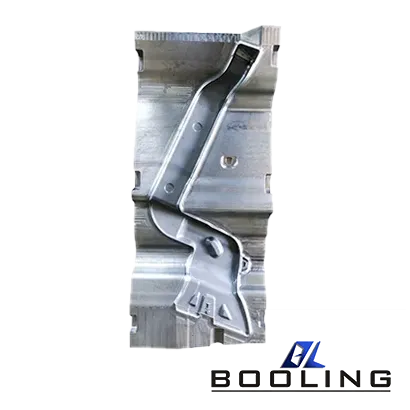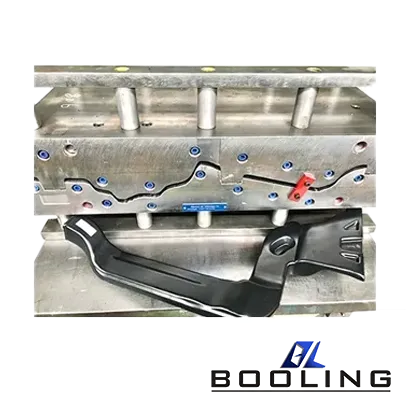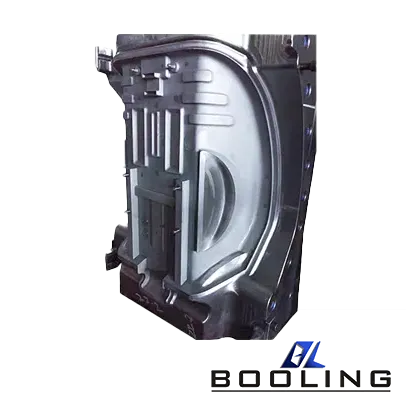Home > Blow Molding in Automotive Manufacturing: Producing Car Components
HDPE Blow Molding
HDPE blow molding is a high-precision plastic molding technology used to produce some hollow plastic products. It can be used to produce larger and more complex blow molded products with a certain degree of flexibility.

Blow molding is a versatile and efficient manufacturing process widely used in the automotive industry to produce a variety of car components. This process involves inflating a heated plastic tube, known as a parison or preform, inside a mold cavity to form hollow parts. The resulting products are lightweight, durable, and cost-effective, making blow molding an ideal choice for automotive applications.
HDPE blow molding is a manufacturing process used to create hollow plastic parts by inflating a heated plastic tube inside a mold cavity. The process can be divided into three main types: extrusion blow molding, injection blow molding, and stretch blow molding. Each type has its unique applications and advantages.
- Extrusion Blow Molding: In this process, a molten plastic tube (parison) is extruded and captured between two mold halves. Air is then blown into the parison, expanding it to fit the mold cavity. This method is commonly used for making large containers and automotive parts.
- Injection Blow Molding: This method involves injecting molten plastic into a preform mold to create a preform, which is then transferred to a blow mold where it is inflated to form the final product. It is ideal for producing small, high-precision components.
- Stretch Blow Molding: Often used for making PET bottles, this process involves stretching the preform both axially and radially before blowing it into the final shape. This method enhances the strength and clarity of the final product.

Advantages of Blow Molding in Automotive Manufacturing
Blow molding offers several advantages that make it an attractive choice for producing automotive components:
- Lightweight: Blow-molded parts are lightweight, which helps reduce the overall weight of the vehicle, improving fuel efficiency and performance.
- Cost-Effective: The blow molding process is highly efficient, allowing for the production of large quantities of parts at a relatively low cost.
- Design Flexibility: Blow molding allows for the creation of complex shapes and designs, enabling manufacturers to produce parts with intricate geometries and integrated features.
- Durability: Blow-molded parts are durable and resistant to impact, making them suitable for use in demanding automotive environments.
- Material Efficiency: The process minimizes material waste, as the plastic is precisely molded to the desired shape, reducing the need for additional trimming or machining.
Key Automotive Components Produced by Blow Molding
Blow molding is used to produce a wide range of automotive components, each with specific requirements and applications. Some of the key components include:
- Fuel Tanks
– Blow-molded fuel tanks are lightweight, durable, and resistant to corrosion. They can be designed with complex shapes to fit into tight spaces within the vehicle.
– Applications: Fuel storage for cars, trucks, and motorcycles.
- Air Ducts
– Air ducts are essential for directing airflow within the vehicle’s HVAC (heating, ventilation, and air conditioning) system. Blow molding allows for the production of ducts with smooth internal surfaces, reducing airflow resistance and noise.
– Applications: HVAC systems, engine air intake systems.
- Reservoirs and Fluid Containers
– Blow molding is used to produce various fluid containers, such as windshield washer fluid reservoirs, coolant reservoirs, and brake fluid reservoirs. These containers are designed to withstand pressure and temperature variations.
– Applications: Windshield washer systems, cooling systems, brake systems.
- Seat Backs and Headrests
– Blow-molded seat backs and headrests provide structural support and comfort while being lightweight and cost-effective. The process allows for the integration of mounting points and other features.
– Applications: Car seats, headrests.
- Bumpers and Exterior Panels
– Blow-molded bumpers and exterior panels are lightweight, impact-resistant, and can be produced with complex shapes and integrated features. They contribute to the vehicle’s overall safety and aesthetics.
– Applications: Front and rear bumpers, side panels.
- Battery Housings
– Blow-molded battery housings provide a lightweight and durable solution for protecting and securing vehicle batteries. They can be designed with integrated cooling channels and mounting points.
– Applications: Electric and hybrid vehicle battery enclosures.

The Blow Molding Process for Automotive Components
The blow molding process for automotive components involves several key steps, each of which must be carefully controlled to ensure the quality and performance of the final product.
- Material Selection
– The choice of material is critical for the performance and durability of the blow-molded part. Common materials used in automotive blow molding include high-density polyethylene (HDPE), polypropylene (PP), and polyamide (PA).The application of HDPE blow molding in automotive air ducts is quite common.
– Material properties such as impact resistance, chemical resistance, and thermal stability must be considered based on the specific application.
- Preform or Parison Formation
– Depending on the type of blow molding process, the plastic material is either extruded into a parison or injection molded into a preform. The preform or parison is then heated to a malleable state.
– The quality and consistency of the preform or parison are crucial for achieving uniform wall thickness and structural integrity in the final part.
- Blowing Process
– The heated preform or parison is placed into the mold cavity, and high-pressure air is injected to inflate it against the mold walls. This step requires precise control of air pressure and temperature to ensure the material fills the mold completely and uniformly.
– The mold design must account for factors such as parting lines, venting, and cooling channels to achieve the desired shape and surface finish.
- Cooling and Ejection
– Once the plastic has taken the shape of the mold, it is cooled to solidify the material. Cooling can be achieved through the use of cooling channels within the mold or external cooling methods.
– After cooling, the finished part is ejected from the mold. The ejection system must be designed to remove the part without causing damage or deformation.
- Finishing and Quality Control
– The final step involves trimming any excess material, known as flash, and performing any necessary secondary operations such as drilling, milling, or surface treatment.
– Quality control measures, including dimensional inspections, pressure testing, and material analysis, are essential to ensure the part meets the required specifications and performance standards.

Advanced Techniques and Technologies in Blow Molding
Advancements in blow molding technology have led to improved efficiency, precision, and product quality in automotive manufacturing. Some of these advancements include:
- Computer-Aided Design (CAD) and Simulation
– CAD software allows for precise design and simulation of blow-molded parts and molds, enabling engineers to optimize the design before manufacturing. This reduces the risk of errors and improves the overall quality of the mold.
– Simulation tools can predict material flow, cooling rates, and potential defects, allowing for adjustments to be made before production.
- 3D Printing and Rapid Prototyping
– Additive manufacturing techniques, such as 3D printing, can be used to create prototype molds or complex mold components. This allows for rapid prototyping and testing of new designs.
– 3D printing can also be used to produce small batches of parts for testing and validation before full-scale production.
- Industry 4.0 and Smart Manufacturing
– The integration of Industry 4.0 technologies, such as sensors, data analytics, and IoT (Internet of Things), enables real-time monitoring and control of the blow molding process. This helps to identify potential issues before they lead to machine downtime or product defects.
– Predictive maintenance and automated quality control systems can improve efficiency and reduce waste.
- Advanced Materials
– The development of new materials, such as high-performance polymers and composite materials, has expanded the range of applications for blow molding. These materials offer improved strength, durability, and resistance to environmental factors.
– Lightweight materials, such as carbon fiber-reinforced plastics, are increasingly used in automotive applications to reduce weight and improve fuel efficiency.
Blow molding is a versatile and efficient manufacturing process that plays a crucial role in the production of automotive components. From fuel tanks to air ducts, reservoirs to seat backs, blow-molded parts offer a combination of lightweight, durability, and cost-effectiveness that is essential for modern automotive design.
Related News
Applied’s expertise in modifying materials at atomic levels and on an ihdustrial scaleenables our customers to transform possibilities into reality.




